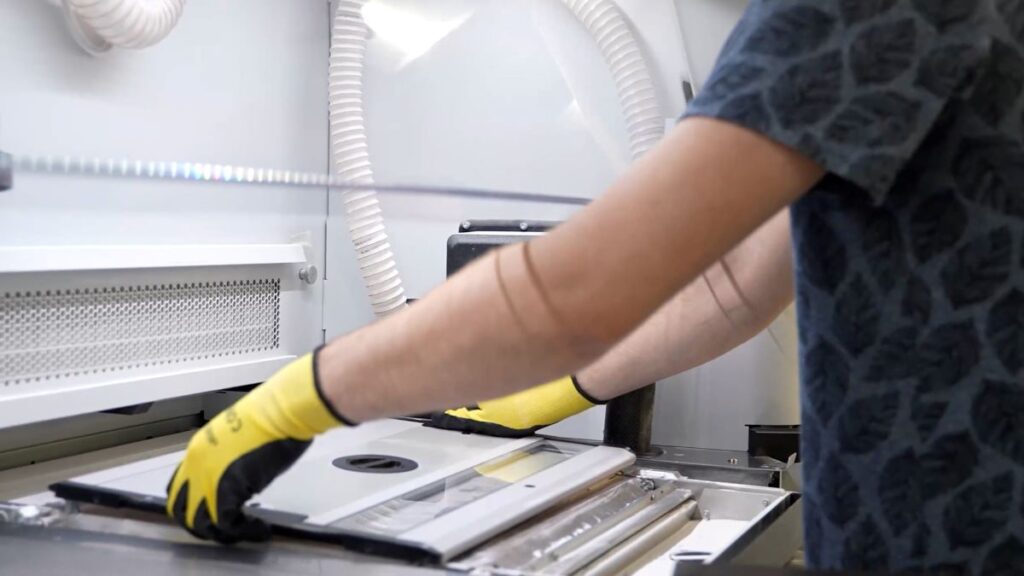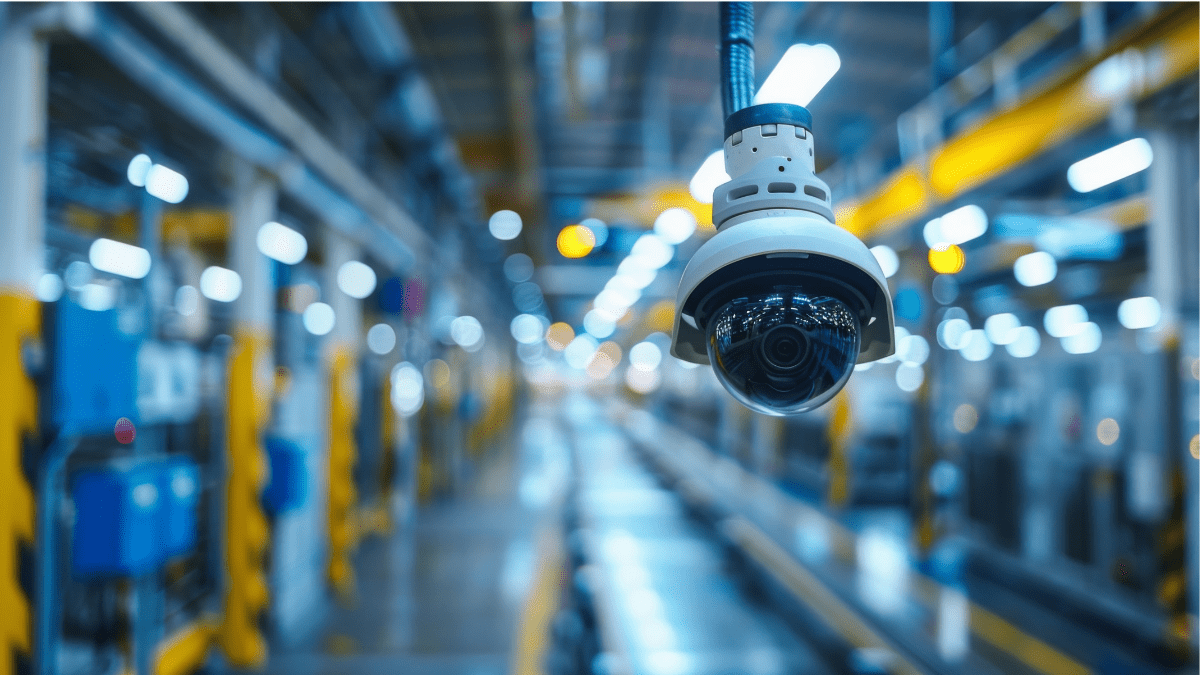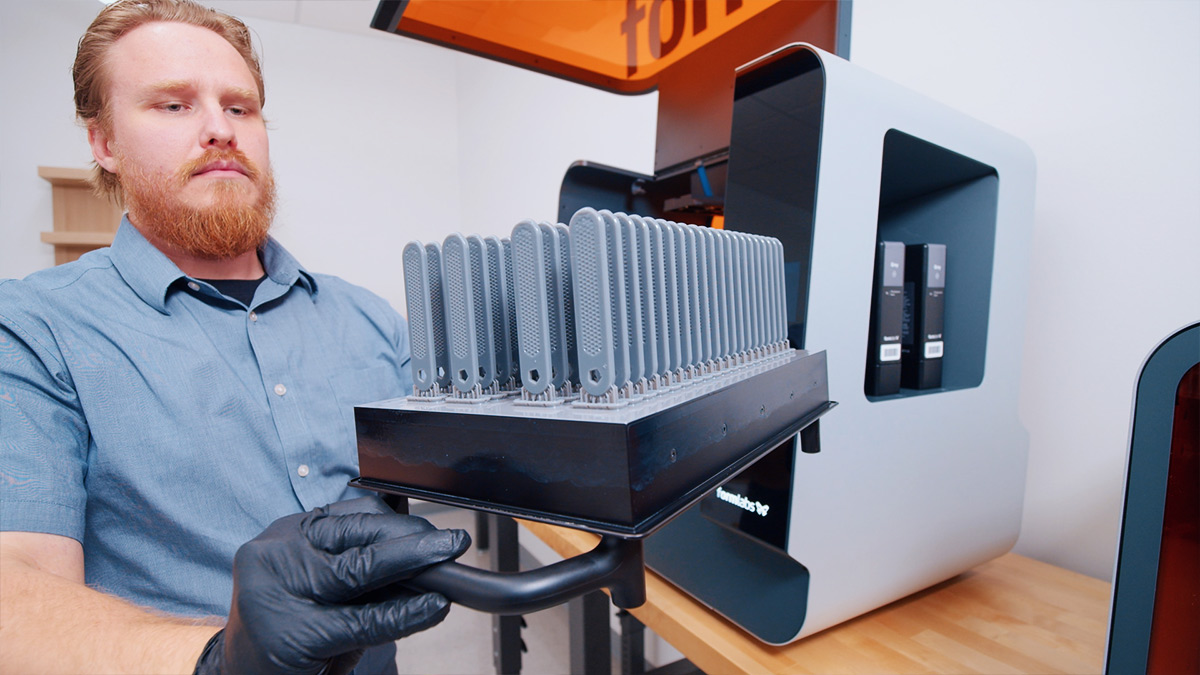In producing medium and large parts that emphasize aesthetics, one high-resolution 3D printing solution stands out among the options. Stereolithography (SLA) 3D printing provides results that have high-quality surface finishes and accuracy. Manufacturers prefer this 3D printing mechanism for prototypes because of its attributes and cost-effectiveness.
Learn how SLA 3D printing works, its benefits, and the most popular use cases to determine the right method for your organization.
What Is Stereolithography (SLA) 3D Printing?
Any manufacturer’s objective is to enable the development of high-performance and quality parts. It’s also the mission of A3D Manufacturing. Delivery of this with our team of engineering experts requires proven, repeatable processes, and SLA 3D printing is part of our portfolio of solutions to accomplish this.
We’ve long been an innovator in 3D printing services, providing SLA 3D printing to companies needing accurate production with a focus on the appearance of the part.
SLA 3D printing delivers this and has a long history in the field. It was the first 3D printing technology commercialized. This additive manufacturing process applies a light source, typically ultraviolet (UV) lasers, to cure photopolymer cross-sections. As a result, the liquid transforms into a solid three-dimensional product.
How Does Stereolithography (SLA) 3D Printing Work?
As noted, the primary actions in stereolithography 3D printing apply lasers to cure resins. The SLA is an epoxy-based photopolymer. In short, the process involves a recoating bar that spreads a thin resin layer. UV lasers create an image of the part in the resin, continuing until all the necessary layers are complete.
Support structures are also necessary with stereolithography 3D printing. They may be top-down or bottom-up. The orientation of the part will determine the location and capacity of the support. Most common support structures have the appearance of ribs and only lightly touch the model. Other shapes include flakes, which are thin wall-like structures, and nets, which nearly wrap around the bottom of parts.
That’s the summary of how it works, but it’s crucial to understand this deeper to determine how it may work for your applications.
There are three main steps in the workflow:
- Design creation and file preparation: The production starts with CAD software or 3D scan data to design the model. Then, you export the design in a 3D printable file format. From there, you import the file into the print preparation system and specify settings while slicing the digital model into layers for printing.
- Printing process: The print preparation software sends the part to the printer. The setup of the SLA printer uses removable tanks and build platforms, which make it easy to switch out materials and start anew. Then, the recoating bar begins its layering process, constructing the part piece by piece.
- Post-processing: Once the printing is complete, remove it from the printer and rinse it with isopropyl alcohol. You’ll detach the support structures and remove any excess resin. Additional curing may be necessary to assist with part strength and performance. Depending on the part’s use, you may also sand, coat, plate, or media blast it.
Benefits of Stereolithography (SLA) 3D Printing
Earlier, you learned about the qualities that make SLA 3D printing so attractive—it’s accurate, delivers a near-perfect finish, and is cost-effective. Let’s review those in detail so you know the range of benefits that come with this 3D printing process.
Exceptional Detail and Smooth Finishes
SLA 3D printing earns the distinction of being the best way to produce parts with smooth surfaces and fine details. Their appearance is comparable to the traditional manufacturing processes of injection molding.
The ability to achieve fine features that are extremely small results from the precise control of the lasers.
Speed
The laser-powered SLA approach involves methodical layering, but it does this at high velocity. Depending on the resin material, parts can cure quickly, enabling multiple iterations daily.
Accuracy and Precision
Other advantages of SLA 3D printing include how accurate and precise the part will be. In terms of accuracy, the finished product closely matches the original dimensions of the CAD model. Slight variances are usually the result of materials, with rigid ones being more so.
Precision describes how you can repeatedly and reliably produce the same dimension. The UV lasers do this incredibly well, even in the smallest features.
Dimensional Stability
The nature of SLA 3D printing production also makes it highly stable. The layer of resins and rapid curing delivers a part that has high tensile strength. Other properties that demonstrate this benefit include thermal stability and impact resistance. These finished products are also isotropic, which leads to strength not changing based on orientation.
Ultimately, the level of stability depends on the resin used in the printing process.
Many SLA Resins Are Usable
SLA resins are highly versatile, with hundreds of variations available. These materials can be hard or soft, including secondary materials such as glass or ceramics. The resins can be very industry-specific as well. Specialty examples include:
- Clear resin, which has the same properties as standard resin but can become transparent in post-processing
- Engineering resins, which can include those that are stiff, rigid, soft, flexible, or resistant to flames and impact
- Biocompatible resins for use in medical applications
- Rubber-like resins, which are highly flexible and have low hardness
Functional Prototypes and End-Use Parts
Due to SLA 3D printing’s attributes noted above—smooth finishing, fine details, speed, accuracy, precision, and stability—the solution is ideal for functional prototypes and end-use parts.
The cost-effectiveness of the production process also supports the use case of prototyping. You can analyze it to detect design flaws before mass production. This is especially true in the medical industry.
Use Cases of Stereolithography (SLA) 3D Printing
What applications are the best fit for SLA 3D printing? Examples include:
- Medical: SLA 3D printing works for the medical industry to develop parts for devices, surgical instruments, prosthetics, and anatomical models for surgery planning.
- Dental: Create highly custom products for crowns, bridges, aligners, splints, and dentures.
- Automotive: SLA 3D printing is a great fit for this vertical, from concept models to aftermarket parts.
- Engineering and product design: Rapid prototyping and tooling with this process are helpful for this use case.
- Aerospace: The aerospace industry uses this type of 3D printing for prototypes, fixtures, manufacturing aids, and the replacement of custom parts. These are often small batch production, which SLA printing excels at producing.
Why Choose A3D Manufacturing for Your SLA 3D Printing Needs?
If your organization sees the benefits of SLA 3D printing, you’ll need an experienced partner. We can be this for your business, as we specialize in digital manufacturing. We guide our customers through implementing SLA 3D printing, assisting you in selecting suitable resins. Our high-quality SLA printers deliver consistent results with precision. Our continuous commitment to customer satisfaction and quality control makes us a leader in this industry. We build relationships with our customers to ensure they can produce fast, high-quality parts.
Get Started with SLA 3D Printing
SLA 3D printing is an advanced process that delivers smoothly finished, accurate parts rapidly. It’s a diverse manufacturing process that can use a variety of resins for many use cases across industries. It’s an innovative and modern approach to prototyping and end-use parts.
Learn more about our SLA 3D solutions and how they can support your 3D printing projects. Have questions? Contact A3D today.




